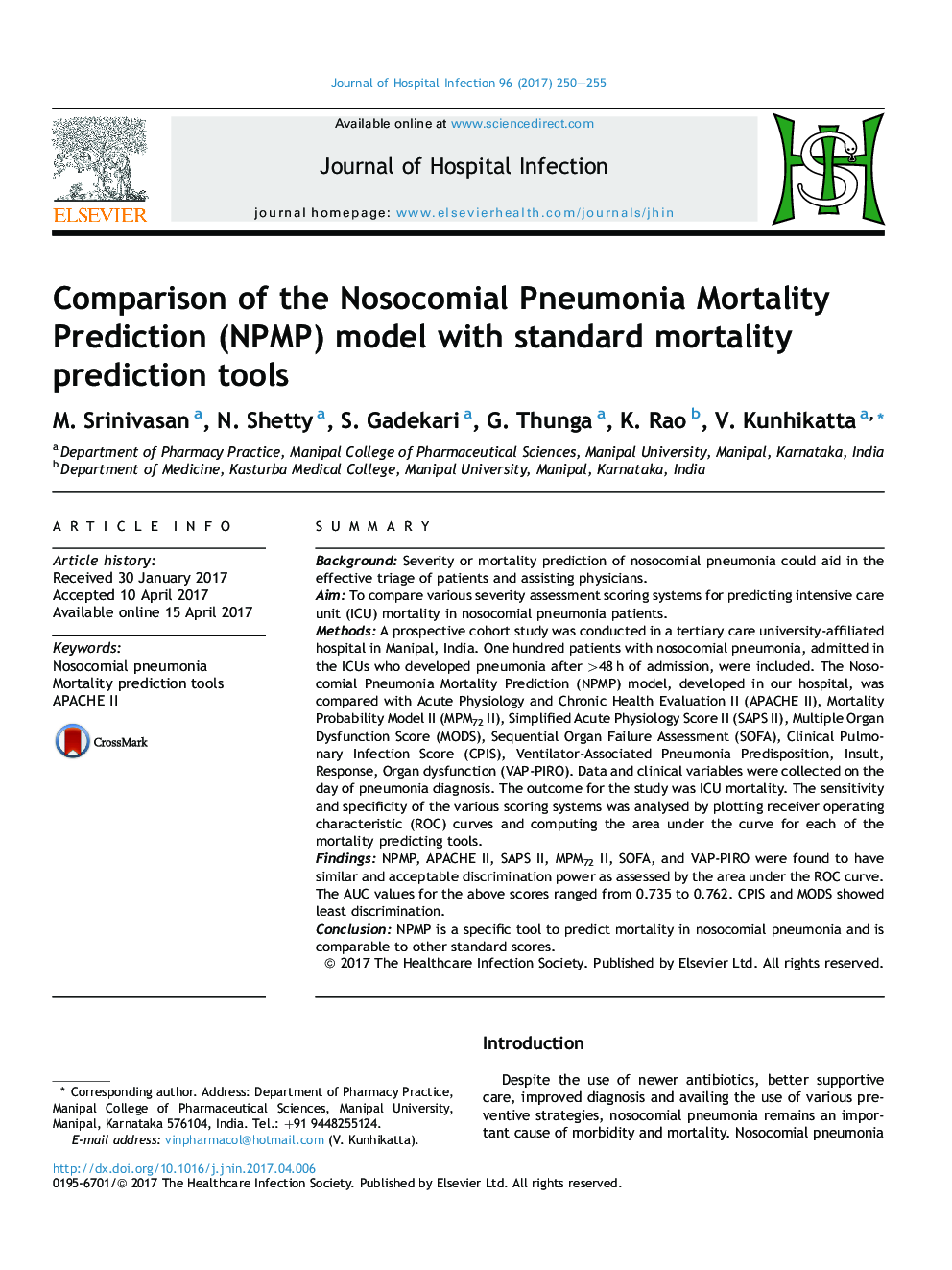| Article ID | Journal | Published Year | Pages | File Type |
|---|---|---|---|---|
| 5668266 | Journal of Hospital Infection | 2017 | 6 Pages |
SummaryBackgroundSeverity or mortality prediction of nosocomial pneumonia could aid in the effective triage of patients and assisting physicians.AimTo compare various severity assessment scoring systems for predicting intensive care unit (ICU) mortality in nosocomial pneumonia patients.MethodsA prospective cohort study was conducted in a tertiary care university-affiliated hospital in Manipal, India. One hundred patients with nosocomial pneumonia, admitted in the ICUs who developed pneumonia after >48Â h of admission, were included. The Nosocomial Pneumonia Mortality Prediction (NPMP) model, developed in our hospital, was compared with Acute Physiology and Chronic Health Evaluation II (APACHEÂ II), Mortality Probability Model II (MPM72Â II), Simplified Acute Physiology Score II (SAPSÂ II), Multiple Organ Dysfunction Score (MODS), Sequential Organ Failure Assessment (SOFA), Clinical Pulmonary Infection Score (CPIS), Ventilator-Associated Pneumonia Predisposition, Insult, Response, Organ dysfunction (VAP-PIRO). Data and clinical variables were collected on the day of pneumonia diagnosis. The outcome for the study was ICU mortality. The sensitivity and specificity of the various scoring systems was analysed by plotting receiver operating characteristic (ROC) curves and computing the area under the curve for each of the mortality predicting tools.FindingsNPMP, APACHEÂ II, SAPSÂ II, MPM72Â II, SOFA, and VAP-PIRO were found to have similar and acceptable discrimination power as assessed by the area under the ROC curve. The AUC values for the above scores ranged from 0.735 to 0.762. CPIS and MODS showed least discrimination.ConclusionNPMP is a specific tool to predict mortality in nosocomial pneumonia and is comparable to other standard scores.
